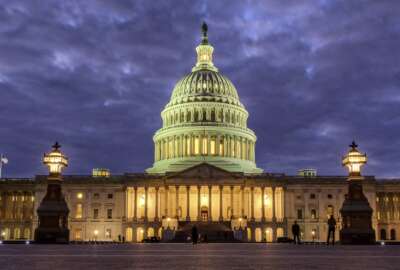Obama gives feds right to request more flexible work options
Federal employees now have the right to request a more flexible work schedule and managers must "carefully" consider those requests, President Barack Obama told...
Federal employees now have the right to request a more flexible work schedule and managers must “carefully” consider those requests, President Barack Obama told agency heads in a June 23 memo on expanding workplace flexibility in the federal government.
The memo, which coincided with a White House conference on working families, also encourages agency heads to expand flexible workplace policies, such as telework, alternative work schedules and temporary part-time duty “to the maximum extent practicable.”
Obama’s directive to federal agencies says employees have the right to request flexible options “without fear of retaliation or adverse employment action,” and that supervisors should meet with employees who request these options to “understand fully the nature and need for the requested flexibility,” according to the memo.
After “carefully” considering the request, managers must respond with 20 days.
Memo lacks ‘heavy hand’ enforcement
Giving employees the right to request more customized work schedules is an idea that’s been “kicked around” by state and local governments over the past few years, said Mike Aitken, vice president of government affairs at the Society for Human Resource Management.
For example, employees in San Francisco, who are parents or caregivers, have the right to request more flexible workplace arrangements under a new city ordinance that went into effect this year. Employers who turn down an employee’s request must provide a “bona fide business reason.”
Obama’s memo on federal workplace flexibility, though, doesn’t go quite that far. Managers don’t have to specify a reason for rejecting an employee’s request and, in that respect, it lacks the “heavy hand of enforcement,” Aitken said.
But it’s still a positive step, he said.
“The employee is encouraged to have a conversation with the employer about their flexibility needs,” Aitken said. And the fact that the President is calling on agencies to expand flexible options “sets the tone from the top,” he added.
Aitken also pointed to the importance of expanding access to flexible work arrangements as a potential remedy for employee morale that’s been eroded by tight budgets and constraints on federal pay.
“Organizations that have flexible workplaces are more effective, they have higher employee engagement, higher employee retention and higher employee productivity,” Aitken said.
Unions cite barriers to flexible workplaces
The memo calls on the Office of Personnel Management to issue guidance to agencies for implementing the President’s memo within 60 days. In addition, agencies should review the results of the annual Federal Employee Viewpoint Survey to gauge employee satisfaction with work-life programs and will be required to publish an annual snapshot of their efforts in a new Workplace Flexibility Index.
Obama said he wants agencies to “promote a culture in which managers and employees understand the workplace flexibilities and work-life programs available to them and how these measures can improve agency productivity and employee engagement,” according to the memo.
The directive drew praise from federal-employee unions, who applauded the President for motivating agencies to offer employees more flexibility.
“Providing employees with more flexible work arrangements is just common sense,” said J. David Cox, president of the American Federation of Government Employees, in a statement. “Employees will be more productive and happier in their jobs, while employers will have an easier time recruiting and retaining quality workers,” Cox said.
But unions say there are still too many barriers — including resistance from agency management.
“Unfortunately, some of our councils have faced enormous resistance from managers to proposals that would expand the use of flexible work schedules, particularly telework,” Cox said. “With the White House demonstrating leadership in this area, hopefully the walls will begin to crack and federal workplaces will begin to embrace these flexibilities.”
One of the biggest barriers to more flexible federal workplaces is a lack of buy- in from front-line supervisors, “who are unfamiliar with some of these strategies who think you’ve got to see a butt in the seat to be productive,” Aitken said. “But that’s an old paradigm.”
The President’s memo will also help to propel agencies to continue to think about ways to become more agile.
“Not all agencies are full adopters” of flexible workplace options, he said. “But as a whole, as an industry, they’re moving in the right direction.”
RELATED STORIES:
Tiny DoD office earns only federal award for workplace flexibility
Obama: Workplace flexibility is a basic need
OPM tests letting feds work without a schedule
Copyright © 2024 Federal News Network. All rights reserved. This website is not intended for users located within the European Economic Area.





